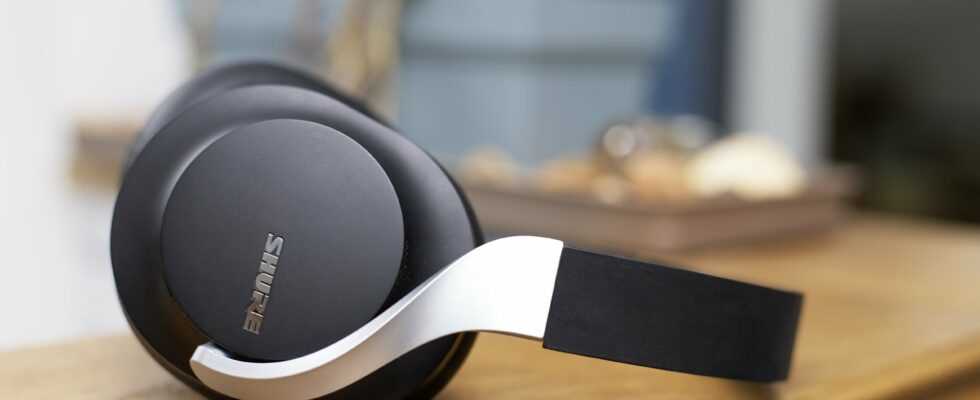A notable player in the professional headphone and microphone industry for decades, Shure continues to innovate and enrich its offer with Bluetooth headphones with ANC, compatible with many Bluetooth codecs and capable of handling analog signals from a wired source, and even digital via its USB input. Offered at a reasonable price, the Shure Aonic 40 is a model to consider for anyone who wants to enjoy listening to music both wired and wirelessly.
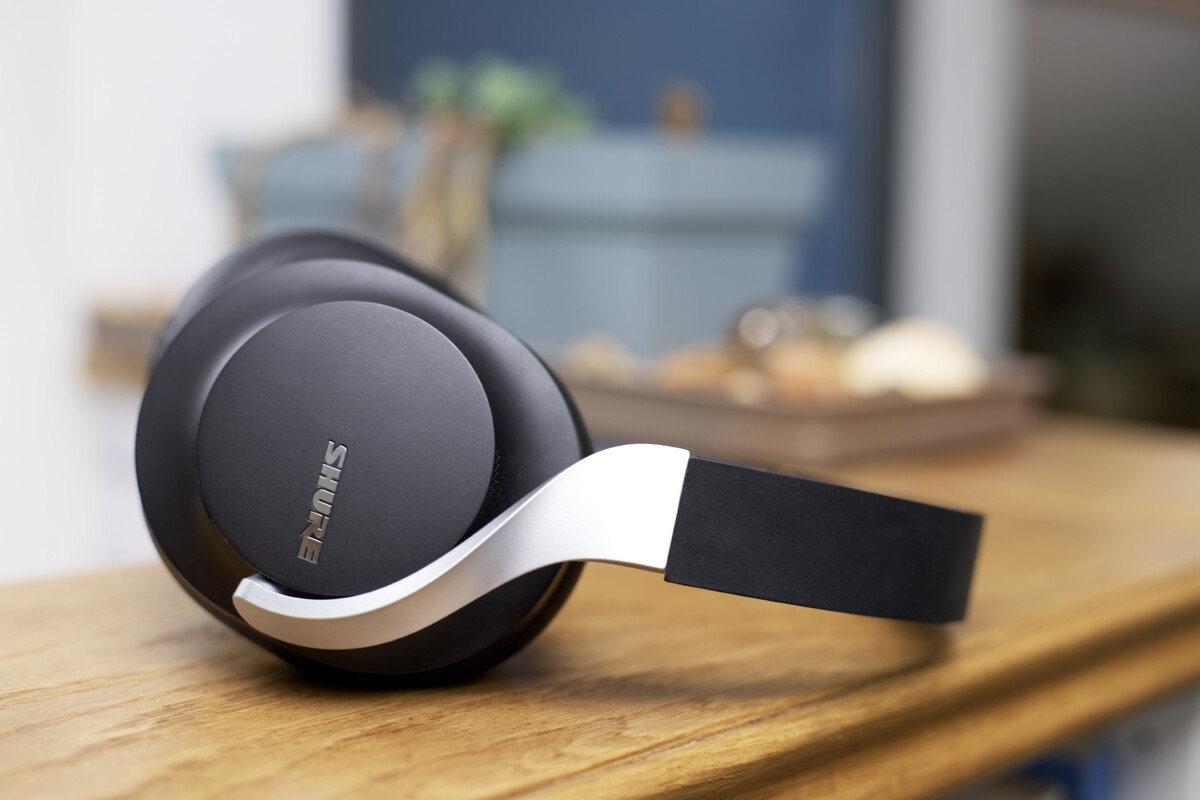
The second wireless headset in the Aonic series, the Shure Aonic 40 borrows its design and most of its features from the Aonic 50 model. Apart from the use of 40 mm dynamic transducers instead of 50 mm and the lack of the Bluetooth LDAC codec, the Shure Aonic 40 benefits from the same advantages, in this case an active noise reduction system ( ANC), aptX HD codec support, analog line-in and lossless listening via USB cable. Not to spoil anything, its autonomy is announced at nearly 25 hours.
Technical sheet
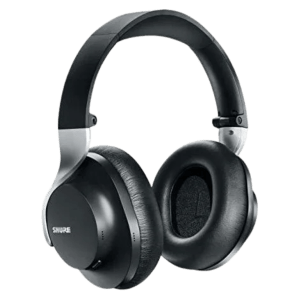
This test was performed with headphones loaned by Shure.
Design
The Shure Aonic 40 are circum-aural headphones with curved lines and a modern look. It is pleasant to look at and pleasant to touch and handle. Assembled with care, its various mechanical parts (adjustable headband, adjustable ear cups) operate smoothly and without parasitic noise. The left shell houses the power button, while the right receives the USB-C and 2.5 mm mini-jack ports, as well as the control buttons and the conversation microphones.

The set is made of PVC, while the memory foam pads are covered in faux leather. This helmet is well balanced weighs 313 grams.
A comfortable helmet
The Shure Aonic 40 is comfortable to wear. Its pads are sized to surround large ears without touching them and exert moderate pressure on the user’s skull. The padded headband with a silicone envelope never gets in the way, even after several hours of listening. It all sounds serious.
Use and application
It takes a little getting used to to position your hands at the control buttons. Good idea, the pause button has a small protrusion that makes it identifiable by touch. So we know where we put our fingers. In addition to managing playback, this button allows taking calls and invoking the voice assistant of the smartphone.
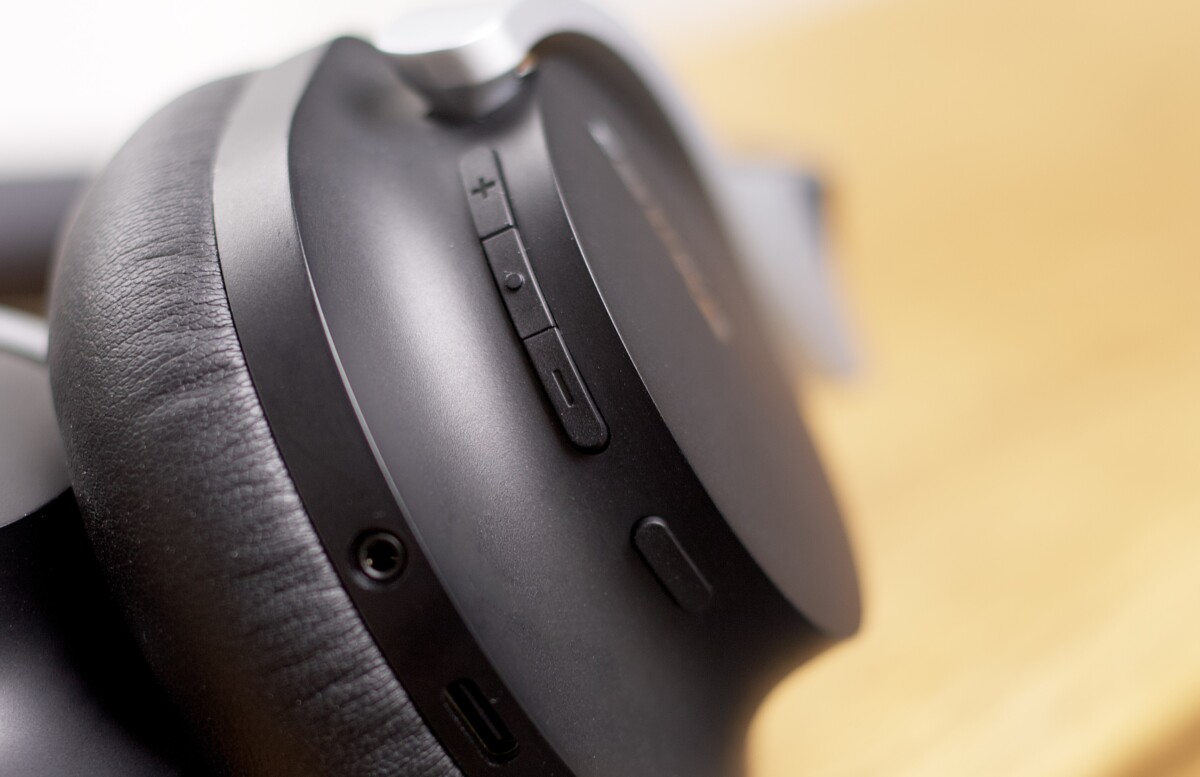
The volume buttons are also used to activate or deactivate the active noise reduction (ANC). The only downside – we quibble – is based on the lack of a port detector: when you remove the headphones, playback does not stop.
Shure Play, an exemplary app
The app that manages the Aonic Shure headphones is Shure Play (iOS, Android). It is a model of its kind, with management of the level of ANC or mixing of ambient sounds (transparency mode), integrated audio file player, and, above all, an excellent equalizer. Several profiles are predefined there, which can be modified at will in order to create new ones.
Four equalization points are positionable from 20 Hz to 20 kHz, with adjustable gain from -10 to +10 dB. By default, each point impacts an octave of frequencies, but it is possible to widen the range of frequencies impacted. Thus, the possibilities of modeling are important.
The results are applied in real time and, it must be said, particularly convincing. Good point, the equalization validated by the user is applied by the amplifier-DAC of the headphones and saved in it. Also, when the headset is used with another source (Bluetooth, USB, line), the sound is automatically equalized.
Multipoint Bluetooth
On the wireless link side, it’s faultless for the Shure Aonic 40. In several dozen hours of testing, it has never caused the slightest power outage with my iPhone. Reception is perfect up to 10 meters and through a wooden floor. Connection to two Bluetooth sources is supported and reconnection to the last device is instantaneous upon power-up.
Active noise reduction
The active noise reduction is not the one that turns a diesel vehicle into electric, nor does it eradicate the noise of the jet engines of an airplane in flight. However, it brings a real benefit to the restitution in a “reasonably” noisy environment. If you happen to listen to music while cooking, the Shure Aonic 40 headphones will adequately suppress the noise of a cooker hood, gas burner or running tap. In addition, the passive isolation is very good.
Audio
The Shure Aonic 40 is equipped with 40 mm dynamic transducers, with neodymium magnets. This precision is important, because the neodymium used to animate the mobile assembly of a loudspeaker brings, in comparison with a classic ferrite magnet, a greater rigor in the movements of membranes, and consequently a better regime. transient. In other words, a fairer and more precise sound.

The impedance of the headphones is 30 Ohms, which makes it easily amplifiable in line mode by any music player or laptop computer. Simply put, it will play loud without the need for a dedicated external amp.
Test setup
I listened to the Shure Aonic 40 headphones with an iPhone 13 Pro Max, a Xiaomi Mi 11 Lite 5G and a MacBook Air M1 in Bluetooth (aptX and AAC), as well as in USB line mode from Apple Music (lossless). The differences are not very noticeable between the Bluetooth sources, even if, as often, the iPhone 13 Pro Max is generally more incisive, especially in the bass.
Bluetooth sound signature
In Bluetooth, depending on whether or not you activate the active noise reduction, the signature of the Shure Aonic 40 headphones evolves in a very perceptible way. When the ANC works, the low register is much more present and in absolute terms quite generous. The bottom of the spectrum, however, loses a little of its nuance because of the ANC. For the rest, the midrange frequencies are well placed, rather linear, while the treble is frankly put forward. Out of the box, ANC active, we get a pleasant and catchy physiological signature. The Aonic 40 is therefore a well-balanced, easy-to-listen headphone.
- Bass: deep and powerful, more detailed when ANC is inactive
- Medium: precise and fast, lots of detail
- Treble: omnipresent, but fluid and quite silky
However, it would be a shame to stick to this signature, which although pleasant, still lacks salt. To be convinced, just activate the equalization profile ” Power “ in the Shure Play app. This is a good starting point for adjusting the signature of the helmet yourself.
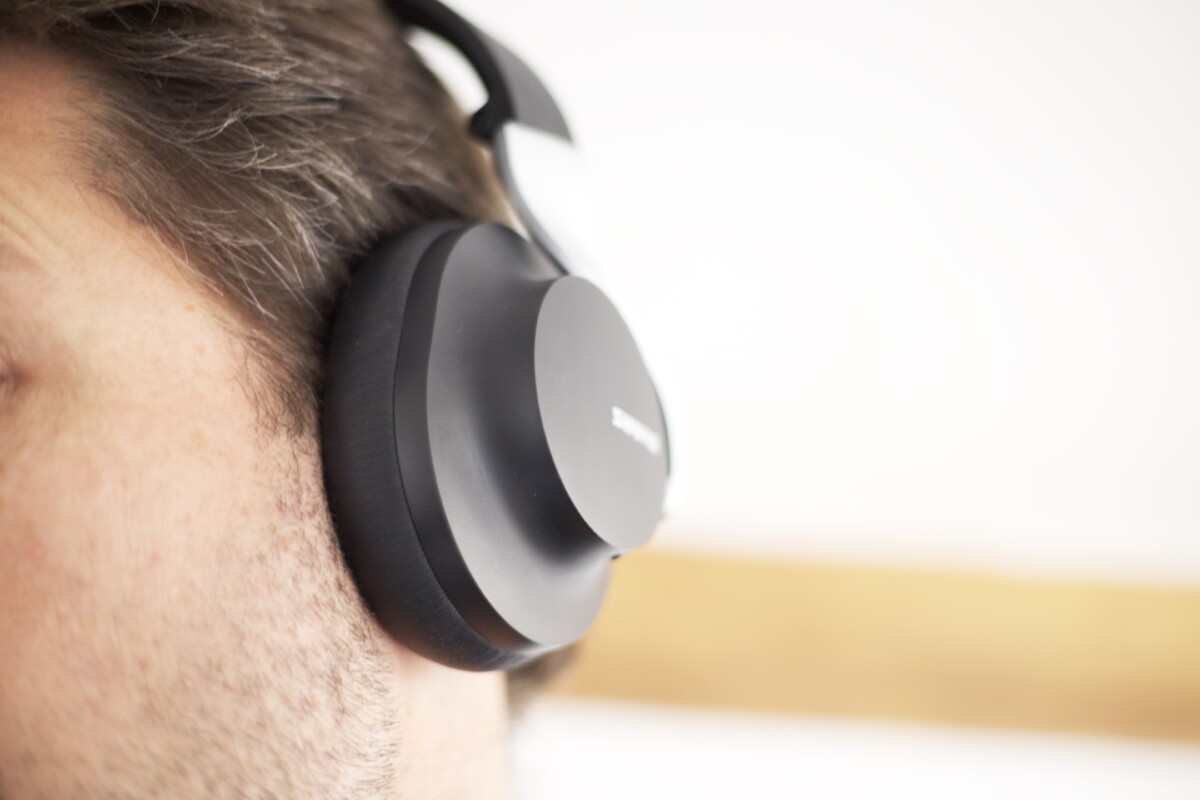
You can reinforce the sub-bass a little with a key positioned around 110 Hz, with a gain of 8 dB, but also add 3 dB of gain at 1.5 kHz and 4 dB at 8 kHz. The equalization function of the app is so powerful that you can model the signature of the headphones as you wish and according to the source used.
Signature sound from analog line input
The quality of the restitution takes a leap forward via the analog line input thanks to the headphone jack. It’s not a surprise when we eliminate Bluetooth compression in this way. Shure offers to use the line input in two ways: by turning off the amplification of the headphones or by keeping it active, which then allows you to take advantage of any equalization applied as well as active noise reduction. In the first case, we discover the natural signature of the transducers of the Aonic 40, without the slightest correction. There, the medium is clearly omnipresent, the bass too light and the treble almost set back. It is therefore better to turn on the headphones and enjoy the equalization (defined in the app). With an Audioquest Dragonfly DAC connected to my MacBook, I then find the balance defined in the Shure app, with improved spatialization. To tell the truth, I discovered a much more refined sound universe, where the bass is better nuanced and the treble more transparent.
Signature sound from USB digital input
In this third configuration, the audio signal is transmitted by the computer or smartphone, through the USB port, in PCM format and without any compression. We therefore benefit from a lossless sound. Since Apple Music (also lossless), it jumps to the ears. The sound signature remains logically the same as in Bluetooth and we automatically find any equalization applied in the Shure Play app.
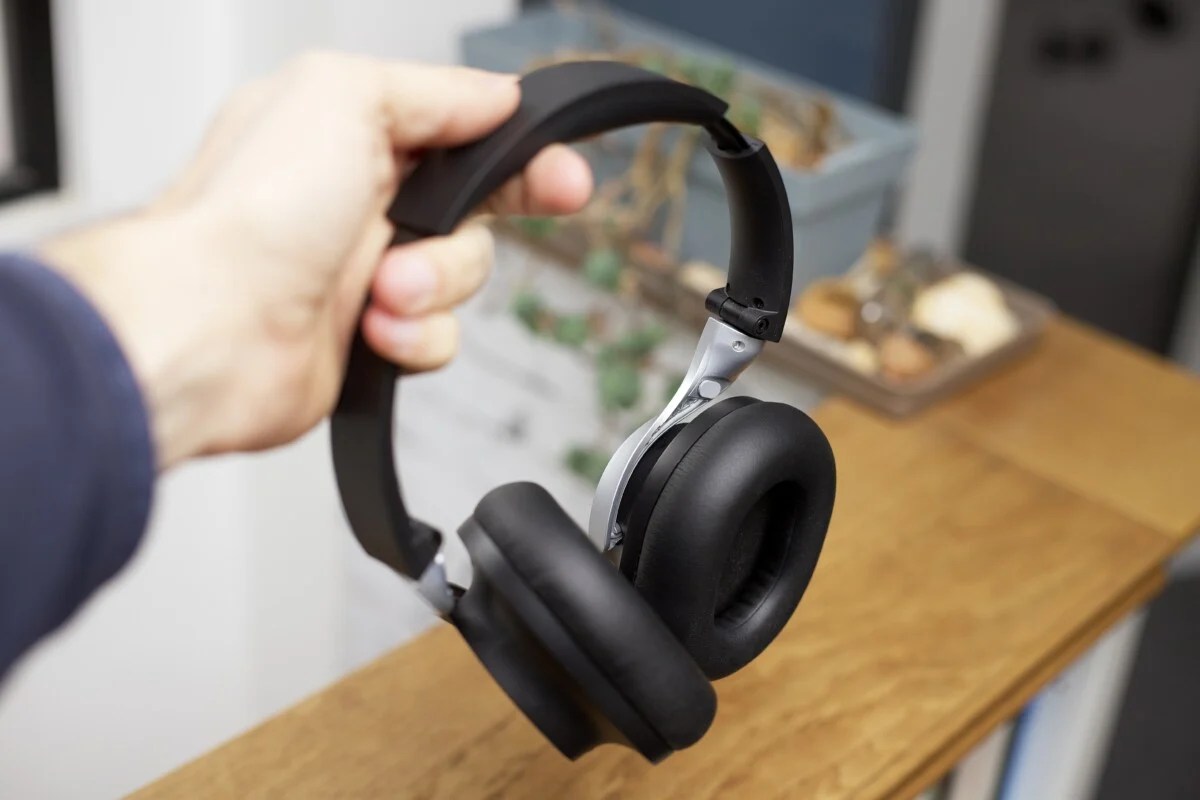
Moreover, the Bluetooth connection remains operational when the USB cable is connected and the app lets you control the headphones. Well seen.
Dynamic behavior and soundstage
Overall, the Shure Aonic 40 demonstrates very good dynamic behavior in Bluetooth connection, with homogeneous energy on the three registers of the sound spectrum. Connected with its analog cable to a USB DAC (Audioquest DragonFly), the Aonic 40 delivers more micro-details and more marked dynamic differences: the sound is even more realistic. In USB digital link, from my MacBook Air, the dynamic behavior becomes spectacular. The reproduction of low frequencies gains in thickness and tone: it suddenly goes very (very) low and with a lot of hold and power. At very high volume, the pinna of the ear even vibrates!
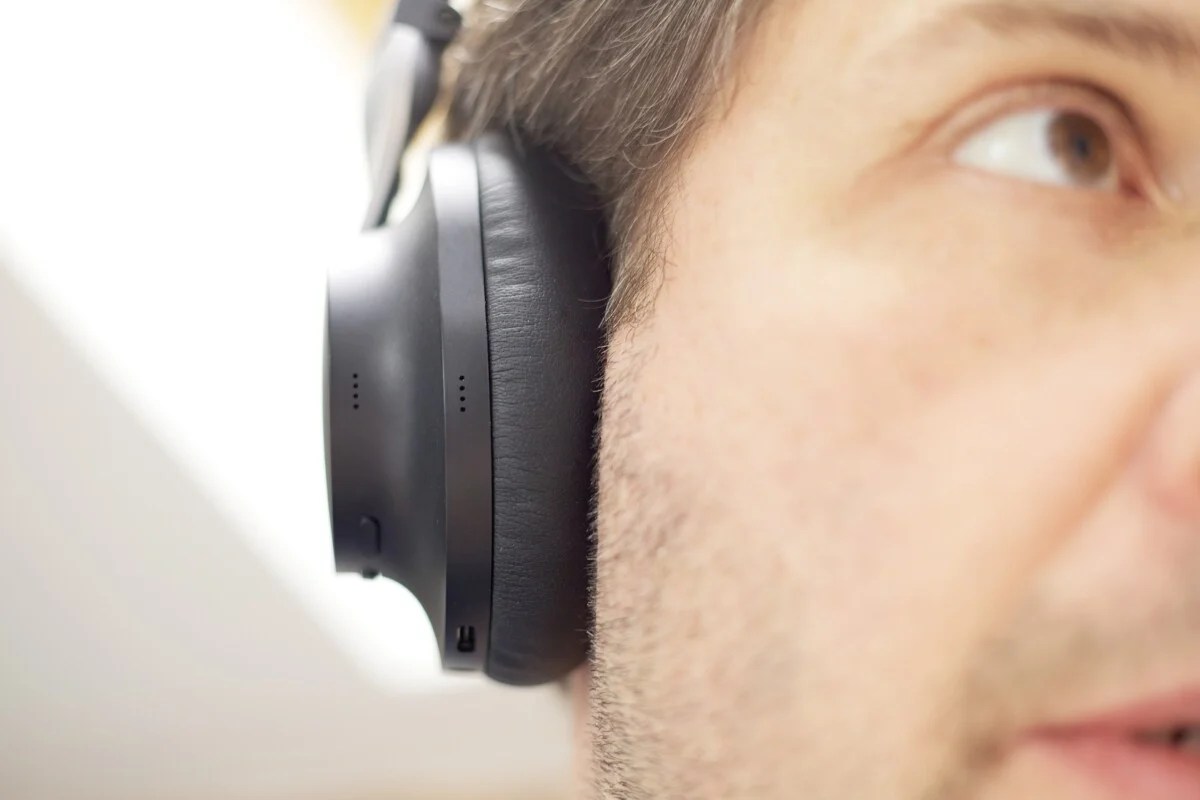
Whether in Bluetooth or cable mode, the sound delivered is very immersive. The sound stage is wide and deep in the frontal axis, with a convincing positioning of the sound elements. To be convinced of this, just play a few tracks with a dense mix. Killing in the name from Rage Against the Machine, Sabotage Beastie Boys are still Atomic of Blondie are restored without compression of the sound plans, even at high volume. As a result, we don’t get tired and we want more.
Microphone
The quality of voice calls is very good, with effective filtering of noise surrounding the listener. You can therefore make an outside call in good conditions.
Autonomy
This is one of the strengths of the Shure Aonic 40 headphones, its autonomy is excellent. Announced at 25:00, it allows you to plan long journeys in music without inadvertently resorting to a mains socket. In Bluetooth AAC connection, at 50% of the volume of an iPhone and despite generous equalization of low frequencies, the headphones only gave up after… 38 hours!
Positive point, the headphones can also be recharged during playback via USB. A good point if you want to enjoy the best possible quality without sacrificing the battery.
Price and release date
The Shure Aonic 40 headphones are available in black or white, priced at €249.
